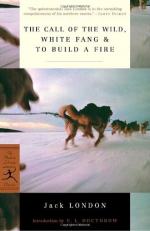|
This section contains 1,165 words (approx. 4 pages at 300 words per page) |

|
SOURCE: “Jack London's ‘To Build a Fire’: Epistemology and the White Wilderness,” in Western American Literature, Vol. 5, No. 4, Winter, 1971, pp. 287–89.
In the following essay, Bowen delineates some critical misconceptions associated with “To Build a Fire.”
Common misconception has it that the dog's survival in “To Build a Fire” metaphorically demonstrates London's belief that man should, upon occasion, rely on his intuitive truths rather than follow his rational thought processes.1 The story is not all that simple, for London, even with his reverence for the canine, would not advocate a total giving over to primordial urges under any circumstances. Indeed, he knew that a regression of this kind would never lead to the Nietzschean superman he so often portrays in his most dynamic characters. Moreover, to accept an overly simplified exegesis denies London at his artistically complex best. For should London endorse such an epistemological position, he would necessarily...
|
This section contains 1,165 words (approx. 4 pages at 300 words per page) |

|


